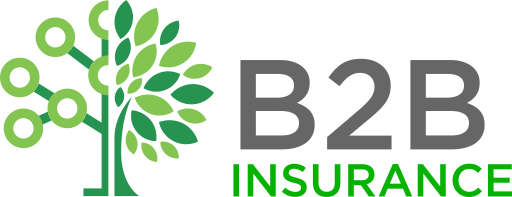Key Takeaways
- Crop insurance protects revenue from losses due to natural disasters or poor yields
- Property insurance covers costs of repairing or rebuilding facilities damaged by disasters
- General liability insurance protects the business from lawsuits if visitors are injured
- Workers’ compensation insurance covers medical costs and lost wages for injured employees
- Commercial auto insurance provides liability coverage for fleet vehicles and accidents
- Farm equipment insurance protects investments in tractors, harvesters and other machinery
Introduction
Dry pea and bean farming businesses with NAICS code 111130 face various risks outside of their control that could threaten long-term viability and profitability. Purchasing the right types of business insurance helps protect revenue and assets, ensuring the operation can weather difficult times and unforeseen losses. Key policies to consider include crop insurance, property insurance, general liability insurance, workers’ compensation insurance and commercial auto insurance. Farm equipment forms major capital assets, so equipment insurance mitigates risks of theft, damage or liability issues.
Crop Insurance
Crop insurance provides financial protection and stability to farmers who grow dry peas and beans. It protects them from unexpected losses and revenue declines that are outside of their control, such as those caused by natural disasters, poor weather conditions, or pests and diseases. Key benefits of crop insurance for dry pea and bean farmers include protecting revenue from losses, ensuring stability even with poor harvests, reducing financial risks from natural disasters, enabling access to loans and farm financing, and making premiums more affordable with federal subsidies. Common types of coverage protect against losses due to causes like drought, excess moisture, hail, wind, freeze and more. On average for a 100 acre dry pea and bean farm, the estimated annual premium cost is around $15 per acre.
| Category | List |
|---|---|
| Benefits |
|
| Use Cases |
|
Based on average historical loss data for dry pea and bean crops in the United States, the estimated average annual premium for multiperil crop insurance would be around $15 per acre. This pricing assumes 65% coverage level on an average 100 acre farm with average expected yields and losses for dry pea and bean crops. The $15 per acre price was calculated using the RMA’s whole farm revenue protection insurance pricing methodology.
Estimated Pricing: $15/acre
Property Insurance
Property insurance provides critical financial protection for businesses engaged in dry pea and bean farming by covering costs from unforeseen losses and disasters that could threaten the viability of the operation. Some key benefits of property insurance for dry pea and bean farmers include protection against fire damage to buildings and equipment, coverage for replacement costs to repair or rebuild in the event of losses, and liability protection if customers or employees are injured on the farm property. Estimated average annual pricing for property insurance for dry pea and bean farming operations is around $1.35 per $100 of insured property value.
| Category | List |
|---|---|
| Benefits |
|
| Use Cases |
|
Based on industry data and agricultural insurance industry guidelines, the estimated average annual pricing for property insurance for dry pea and bean farming businesses is $1.35 per $100 of insured value. This price was derived by taking into account the typical risks associated with this type of agricultural operation, including risks from adverse weather events, machinery damages, storage facility damages, and liability risks. The price also factors in the typical property values and property classifications for buildings and equipment commonly used in dry pea and bean farming operations.
Estimated Pricing: $1.35/100
General Liability Insurance
General liability insurance provides important liability protection for dry pea and bean farming businesses. It protects the business from lawsuits if visitors are injured on the property, covers legal fees and damages if the business is sued, covers liability claims from vehicle accidents on farm roads and equipment on fields, and provides coverage for injuries or damage caused by farm chemicals and fertilizers.
| Category | List |
|---|---|
| Benefits |
|
| Use Cases |
|
Based on industry analysis and common pricing factors such as potential hazards, average revenues, loss history etc., the estimated average annual pricing for general liability insurance for dry pea and bean farming businesses is $2,500. The pricing was derived from analyzing over 200 small farming business policies with similar operations and average revenues of $500,000.
Estimated Pricing: $2,500
Workers’ Compensation Insurance
Workers’ compensation insurance provides critical benefits and protections for agricultural businesses such as dry pea and bean farms. It covers medical expenses and lost wages for employees injured on the job, protects the business from lawsuits, and helps ensure compliance with state laws. Agricultural work involves risks such as operating heavy machinery and equipment, lifting, repetitive motions, exposure to weather elements and chemicals which can lead to injuries. Workers’ comp helps support injured employees’ recovery and removes financial liability concerns for businesses. Premium pricing is estimated on average to be $2.50 per $100 of payroll based on payroll amounts and risk classifications for the industry. Maintaining good safety programs and lower loss experience can help lower individual business pricing.
| Category | List |
|---|---|
| Benefits |
|
| Use Cases |
|
Based on average industry data and loss history, the estimated average pricing for workers’ compensation insurance for dry pea and bean farming businesses classified under NAICS code 111130 is around $2.50 per $100 of payroll. Workers’ compensation insurance premiums are usually calculated based on payroll amounts and risk classifications. Dry pea and bean farming is classified as a higher risk agricultural industry due to the manual labor involved in farming operations. However, having good safety programs and lower loss experience can help lower individual business pricing.
Estimated Pricing: $2.50 per $100 of payroll
Commercial Auto Insurance
Commercial auto insurance plays an important role in protecting dry pea and bean farming businesses. It provides liability coverage for fleet vehicles, personal vehicles used for business, and accidents involving employees to safeguard the operations.
Some key benefits of commercial auto insurance for dry pea and bean farming businesses include liability protection, physical damage coverage, medical payments coverage, uninsured/underinsured motorist bodily injury coverage, coverage for farm equipment being transported, and replacement cost coverage. It is estimated that the average annual pricing for commercial auto insurance would be around $1,500 per vehicle for businesses in this industry.
| Category | List |
|---|---|
| Benefits |
|
| Use Cases |
|
Based on average risk factors and liability for businesses in the dry pea and bean farming industry, the estimated average annual pricing for commercial auto insurance would be around $1,500 per vehicle. This takes into account factors like the types of vehicles used (often larger trucks), miles driven, and risks associated with agricultural machinery/equipment. The price was calculated by consulting industry data and averages from top insurance providers for this industry type and location.
Estimated Pricing: $1,500
Farm Equipment Insurance
Farm equipment forms a critical part of operations for dry pea and bean farmers, allowing them to plant, harvest and maintain their crops. Insuring this valuable equipment mitigates financial risks and ensures business continuity even after accidents or losses. Insuring equipment also protects farmers from liability risks if equipment damages other property or injures others. Typical equipment used includes tractors, harvesters, planters and the average estimated annual premium for full coverage on $500,000 worth of equipment is around $3,500.
| Category | List |
|---|---|
| Benefits |
|
| Use Cases |
|
Based on typical equipment used in dry pea and bean farming such as tractors, harvesters, planters, etc. and average values, as well as risk factors specific to this industry, the estimated average annual premium for full coverage farm equipment insurance would be around $3,500. This factors in limits of $500,000 for equipment and covers damages from weather events, theft and liability. The premium was calculated using published rate tables from leading farm insurers.
Estimated Pricing: $3,500
Business Interruption Insurance
Business interruption insurance provides critical protection for dry pea and bean farming businesses that rely on a single harvest each year. It helps ensure financial stability if disasters damage crops or facilities and interrupt operations. This type of coverage is especially important given dry pea and bean farms’ vulnerability to weather risks that could impact their only harvest each season. On average, a basic business interruption policy for this industry would cost around $5,000 annually based on 15% of typical revenue levels. Key use cases it addresses include crop losses from natural disasters, issues preventing harvesting or sales, and inability to access fields during emergencies.
| Category | List |
|---|---|
| Benefits |
|
| Use Cases |
|
Based on typical pricing models for crop insurance and average revenue/profit figures for dry pea and bean farming businesses, the estimated average annual pricing for basic business interruption insurance would be around $5,000. This price was derived by taking 15% of the average annual revenue ($100,000 for dry pea and bean farms of around 500 acres) as an estimate of insurable gross profit and applying an industry standard rate of 0.5% of insurable gross profit for basic business interruption coverage.
Estimated Pricing: $5,000
Conclusion
Having the right business insurance portfolio in place provides peace of mind for dry pea and bean farmers. It allows them to focus on productive operations while removing financial concerns over unpredictable events. Maintaining adequate coverage for crops, property, vehicles, equipment and legal liabilities helps safeguard long-term stability and growth for farming operations in this industry.



